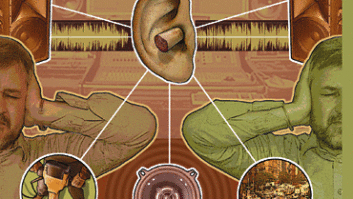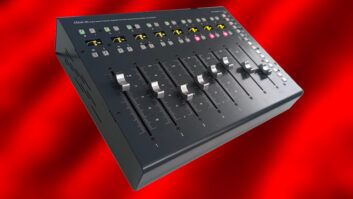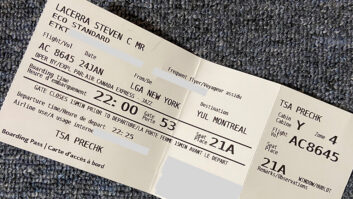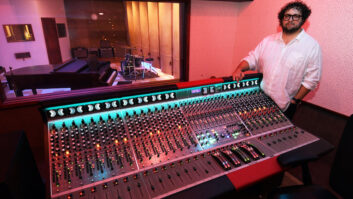In his Continuing Adventures In Software, Rich Tozzoli takes a walk on the Dark Side.

Dark, aggressive, thrilling and threatening. Yes, that’s just what the tagline for Heavyocity’s new Damage software states (heavyocity.com). And within five minutes of installation, sure enough, that’s just what I got. Throw in a few extra words such as nasty, epic, powerful and edgy, and you’ve got a quick encapsulation of this highly creative tool.
First things first; I’ve been a fan of all of Heavyocity’s releases, dating back to the original Evolve several years back. It broke new ground in delivering huge percussion sounds, and the follow-up “cousins,” Mutations 1 and 2, just widened the sound field even more. I’ve used them all on countless TV tracks and record productions. Having said that, I expected a lot from Damage, and thankfully, it delivered.
Damage, which is housed within the Native Instrument Kontakt 5 engine, features 30 GB of percussion, industrial kits, impacts and loops in a variety of styles and effects. There are more than 200 sampled percussion sources and over 500 single shot elements, in several velocity layers. It’s divided into two primary categories, rhythmic suites and percussive kits, with four “loosely” classified styles— Mangled Pop, Electronic, Epic Tech and Epic Organic.
I like the fact that with the loops, you can choose from either loop menus or single loops. With the menus, they map them across the keyboard, so you can create your own layered grooves, something I always do with their programs. With the single loops, you can easily control such things as tuning and pans, but you can also freeze, randomize and even reverse slices in real time with their “modifiers.”
Within the loop menus and most single shot kits, there’s a cool Amp Sequencer with 16 steps, which can create some great stutter-type effects. You have to just play around with it to get the feel for what it does.
The overall effects also feature EQ, Filters, Distortion, LoFI, Reverb, Delay and Compression, as well as the Punish Knob (which can be turned on and off), combining limiting and compression with saturation and distortion.
There are a few cool twists under the hood of Damage, as well. Within some of the percussive kits, the Stage tab lets you move the drums in up to 35 positions on a virtual stereo “stage.” Some also have the ability to control three different mic sources within the mixer—close, room and hall. You can also mute, solo or even purge each selection, lowering your DSP requirements.
I also like the Trigger FX, which was first released in Mutations 2. It allows you to add Punch, Phase, Rotor, LoFi, Glitch FX, Pitch Sweeps, Filter Sweeps and Delay to loops on the fly with your MIDI keyboard. Wow, can this be fun!
Sometimes, you can get carried away with the some of the effects, and you’ll want to find your way back to where you started. Often, I would just reload the patch and start over. Maybe offering a “step back” or “memory” button on future versions might be useful.
Apparently, the Heavyocity team spent two years to make this, recording in its own studio in New York, Skyline Studios (also in New York), Prism Sound Studios’ The Church in Boston, and even a junkyard in Connecticut. They recorded exploding cars, cranes, dumpsters and “large objects dropped from great heights.”
To capture all of this, they used all high-end mics, consoles and gear and manipulated and processed all the sounds into the Damage interface. Lucky for us users, we just have to call up the software, press a few keys and feel the power. Or you can dig deep into it and take it to another level. I can’t recommend Damage enough for anyone seeking to create some huge-sounding percussive tracks with an edge. What’s next?
Heavyocity Damage’s
Rhythmic Suite






